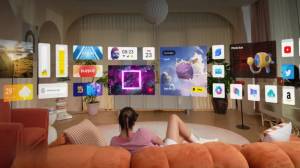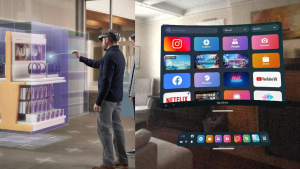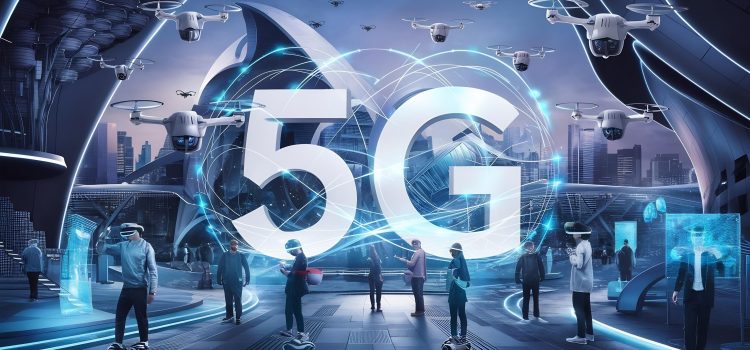
Introduction
As mobile networks evolve, the launch of 5G is transforming how people experience video streaming. With faster speeds, lower latency, and greater capacity, 5G promises to take video streaming to new heights, providing smoother and more immersive experiences for users around the world. This article explores how 5G impacts video streaming, enhances user satisfaction, and addresses common issues like buffering and lag.
What Makes 5G Different from 4G?

5G technology is a major step forward from 4G, thanks to its advanced network capabilities. Where 4G offered fast internet speeds, 5G is designed to deliver ultra-fast connections, with speeds up to 100 times faster than 4G. Additionally, 5G networks can handle more connected devices without compromising speed or quality, which is critical as more people stream video from multiple devices.
- Speed: 5G can offer speeds up to 10 Gbps, compared to 4G’s average speed of 12-50 Mbps.
- Latency: 5G reduces latency to as low as 1 millisecond, compared to 4G’s 50 milliseconds.
- Capacity: With 5G, mobile networks can handle up to 1 million devices per square kilometer.
These improvements translate directly into better video streaming, particularly in high-demand areas like city centers, sports arenas, and concert venues.
Key Benefits of 5G for Video Streaming

1. High-Speed Connectivity
One of the standout features of 5G is its blazing-fast connectivity. Where previous generations like 4G LTE offered download speeds up to 100 Mbps, 5G can reach up to 10 Gbps in some areas. This significant improvement allows users to stream high-definition (HD) and 4K videos seamlessly, without long load times or buffering issues.
2. Reduced Latency
Latency, or the delay between sending and receiving data, is crucial for a smooth streaming experience. With 4G, latency was typically around 50 milliseconds, whereas 5G reduces it to just 1-10 milliseconds. Lower latency is particularly beneficial for live streaming, virtual reality (VR), and augmented reality (AR) applications, where even small delays can impact the experience.
3. Increased Network Capacity
5G technology can support many more devices than 4G, meaning that it can handle large numbers of users streaming simultaneously without compromising quality. This capability is essential as more people access streaming platforms, especially in high-traffic areas like stadiums, concerts, or busy city centers.
4. Enhanced Video Quality and Resolutions
With 5G, streaming platforms can deliver higher video quality, supporting resolutions such as 4K, 8K, and beyond. The increased bandwidth ensures that higher-quality videos load quickly and stream smoothly, enabling users to enjoy a more immersive experience with sharper visuals and more vibrant colors.
Better Connections in Crowded Places
With 5G, people can stream videos more easily in busy areas like concerts, stadiums, or city centers. In these places, many devices try to connect to the internet at the same time, which can slow down streaming on 4G networks. However, 5G can handle many connections at once without dropping the quality. This implies that even in situations where there are numerous other users present, everyone can enjoy uninterrupted, fluid video viewing.
Impact on Streaming Services

Streaming services like Netflix, YouTube, and Hulu are benefiting from 5G as well. With faster speeds, these services can offer more high-definition content. Users can watch movies and shows in stunning 4K or even 8K resolution without worrying about buffering. This makes the viewing experience much more enjoyable and allows users to see more details in their favorite films and shows.
Enhancing Live Events

Live streaming of events, such as sports games, concerts, and conferences, is greatly improved with 5G. The low latency of 5G means that viewers can watch events in real-time without delays. This is crucial for sports fans who want to feel like they are part of the action. 5G allows fans to enjoy live streams as they happen, creating a sense of excitement and connection that wasn’t possible with older networks.
Enhancing Streaming Quality and Resolution

5G’s speed and capacity allow for higher video resolutions, such as 4K and even 8K, without interruptions. In the past, high-definition streaming required a stable Wi-Fi connection due to data demands. Now, with 5G, users can enjoy HD streaming on the go with minimal buffering.
1. Real-Time Video and Live Streaming
For live streaming and real-time video, 5G’s low latency is a game-changer. Latency is the delay between sending and receiving data, and with 5G, this delay is nearly imperceptible. This is especially beneficial for live broadcasts, online gaming, and interactive videos, where any lag can disrupt the experience.
2. Supporting Advanced Video Features
5G enables advanced features like augmented reality (AR) and virtual reality (VR) within video streaming apps, adding layers of engagement. With AR and VR, users can enjoy interactive experiences such as 360-degree views or virtual concerts. These technologies require high data rates and low latency, both of which 5G supports, creating new opportunities for immersive video content.
How 5G Reduces Common Streaming Issues

One of the most common frustrations with streaming is buffering, which occurs when the network cannot keep up with data demands. With 5G, buffering is significantly reduced or eliminated thanks to faster data transfer speeds.
1. High Capacity for Uninterrupted Access
5G’s ability to support numerous devices on the same network without sacrificing quality means users in crowded spaces will no longer experience lagging or throttling, common issues in densely populated areas on 4G networks. This improvement benefits both individual users and companies that rely on streaming for business operations.
2. Market Implications and Future Prospects
5G’s effect on video streaming is not only positive for consumers but also transformative for industries such as entertainment, advertising, and e-learning. Brands can develop more interactive content, educators can provide real-time remote lessons, and streaming platforms can deliver higher quality to meet increasing user expectations. These changes signal an exciting shift towards a more connected, interactive world.
Transformative Applications Enabled by 5G

1. Virtual and Augmented Reality (VR and AR)
5G is enabling new, immersive experiences through VR and AR. The reduced latency and faster speeds of 5G make it possible to stream interactive, 360-degree videos without lag, a crucial factor for VR and AR applications.
2. Mobile Gaming and Cloud Gaming
Gaming has evolved alongside video streaming, with many games now streamed from cloud servers rather than downloaded locally. With 5G’s low latency and high speeds, mobile and cloud gaming experiences improve significantly, making it possible to stream high-resolution games with minimal lag.
3. Live Event Streaming
Live streaming of events, from sports to concerts, benefits greatly from 5G. The ability to stream in real-time with minimal latency ensures that viewers receive the action as it happens, without frustrating delays. It also allows for new camera angles and interactive options for users, enhancing the overall experience.
More Interactive Experiences

5G also opens the door to new types of content that involve user interaction. For example, augmented reality (AR) and virtual reality (VR) require fast internet speeds and low delays. With 5G, users can engage in interactive experiences, such as virtual concerts or games that let them move around and interact with their environment. This adds a fun and exciting layer to video streaming, making it more than just watching.
Affordable and Accessible
As 5G technology spreads, it is becoming more affordable and available to more people. Mobile phone companies are investing in building 5G networks, which will eventually reach many areas, including rural and underserved locations. This means that more people will have access to high-quality video streaming, making it easier for everyone to enjoy their favorite content without limitations.
Future of Video Streaming

Looking ahead, the future of video streaming is bright with 5G. As more people use 5G networks, streaming platforms will continue to innovate. They will create new types of content and enhance existing shows and movies. The combination of fast speeds, low latency, and high-quality video will change how we consume media. Viewers can expect more exciting and immersive experiences in the years to come, thanks to the power of 5G.
Comparative Table: 4G vs. 5G in Video Streaming
| Feature | 4G | 5G | Improvement |
|---|---|---|---|
| Speed | 12-50 Mbps | Up to 10 Gbps | 100x faster streaming |
| Latency | 50 ms | 1 ms | Minimal lag for real-time content |
| Device Capacity | Limited | 1 million/km² | Higher capacity for crowded areas |
| Video Quality | Up to 1080p | 4K to 8K | Enhanced visual experience |
| AR/VR Compatibility | Limited due to lag | Full support | Smooth interactive experiences |
| Energy Efficiency | Moderate | High | Prolonged battery life for devices |
Analysis Table: Benefits of 5G for Video Streaming
| Feature | 5G Benefits | User Impact |
|---|---|---|
| Faster Speed | Rapid data transmission | Reduced buffering, seamless playback |
| Lower Latency | Real-time responsiveness | Smooth live streaming and gaming |
| Increased Capacity | Supports a high number of connected devices | Reliable streaming in crowded spaces |
| Higher Video Quality | Supports 4K and 8K resolutions | Enhanced visual quality and clarity |
| AR/VR Compatibility | Enables immersive, interactive features | Access to new experiences in streaming |
| Energy Efficiency | Less strain on device battery life | Longer streaming times on mobile devices |
Conclusion
5G technology has set a new standard in video streaming, offering enhanced speed, reduced latency, and higher capacity, all of which contribute to a superior user experience. From high-resolution videos to immersive AR/VR content, the possibilities of 5G in video streaming are vast and promising. As more countries adopt 5G, users worldwide will gain access to these advancements, reshaping the way we consume digital content and interact with media.










